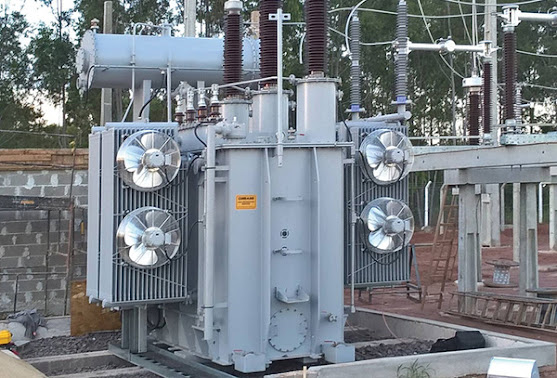Oil-cooled transformers are a valuable asset in today's
dynamic power market. Technology advances have made it difficult to supply and
consume energy efficiently. This is why it is crucial to extend the operating
life of these assets.
It is important to keep transformer assets in good
condition. They convert incoming power to meet your plant's power consumption
ratings.
All types of oil-cooled operational transformers around
the globe are at various stages in their life expectancy, which can range from
1-30 years or older.
The following factors have been shown to reduce
operational performance and life expectancy in oil-cooled transformers that
have not reached or even come close to the 30-year mark.
Budget constraints for maintenance and spare parts
Reactive and unplanned maintenance of assets can lead to
occurrences like the breakdown or rewinding because there are no critical
spares.
It is a mistake to fail to implement planned and
preventative maintenance programs, which is not ideal.
Recycled transformers can be purchased at higher prices
because of high demand from power users. This makes it even more difficult to
avoid a reactive or unplanned maintenance situation.
These situations can often cause the loss of power to
your plantar machinery, which in turn results in loss of production. This in
turn equates to the loss of revenue and a serious hit to the return of investment
of your assets.
Oil-cooled transformer owners and users should first initiate and implement cost-effective planned and preventative maintenance systems.
It is vital to implement a maintenance strategy. Anything
less will not be accepted in today's competitive and fast-paced environment.
There is a lot of information available on suppliers, systems and procedures for maintaining transformers. However, expert guidance is best.
This editorial will briefly summarize the most simple and reliable method for maintaining transformers based on ArmCoil’s extensive
industry experience and knowledge - including the segment in which the company
is successful -
A baseline, or record of the asset's history, is the best starting point in maintaining oil-cooled transformers or any other piece of equipment. This information can be used to accurately measure the asset's condition on a monthly or annual basis.
Instead, negotiate fixed rates with your supplier to ensure a three-year maintenance contract. This will ensure consistent quality and consistency that is tailored to your needs.
It is best to source from ISO-accredited companies who are well versed in the importance of traceability, quality and other high standards of work methods.
The ideal starting point is to determine the condition of
assets as they are. For operational oil-cooled transformers, this is done by
performing on-site oil sampling, testing, and visual inspections.
You should send these samples, images, testing, and visual inspections to us in a report format. This will include all results. You should also include any discrepancies and offer suggestions for rectifying them.
DGA testing (Dissolved Gas Analysis)
When there is a very slight flashing/ arcing between connections, gasses are emitted which can build up in the transformer tank.
Moisture content
This test measures the moisture content in the transformer.
Furanic testing (winding insulation tests)
This test is used to measure the insulation around electric conductors, mostly active coils/windings.
Corrosive sulphur tests
This test measures the corrosion of the material within the transformer as a result of corrosive reactions at ambient or high temperatures. This test measures the corrosion of all copper, steel, insulation, and other materials.
Test PCB
It is crucial to track the presence of polychlorinated biphenyls, or PCBs. These chemicals are banned from human and environmental use.
Thermal imagery
This test can be used to identify hot or cold spots around the transformer. It is also useful to check that cooling radiators have not become blocked by sludge. Thermal imagery can be conducted with a variety of equipment.
Testing of auxiliary equipment
This test is intended to verify the functionality of all auxiliary parts, including the Buccholz relay and winding temperature indicators. Pressure relieve valves. On- and offload tap changers. All types of breakers.
Visual inspection
This allows you to take photos of the unit under evaluation and note any visual faults such as loose cables, paint condition, leaking valves or plinth condition. This visual representation should be kept for historical purposes.
Last words
These eight inspections are just a guideline for what can be done to maintain your transformers. As the size of the transformer is different, the evaluations can vary from 11kV to 22kV to 33kV to 66kV to 88kV to 132kV.
It is therefore important that the owner/end-user clearly
explains what is needed before an evaluation is performed. ArmCoil, a reputable
contractor, is willing to help in the creation of specifications that can be
approved by clients prior to any inspection.










No comments:
Post a Comment